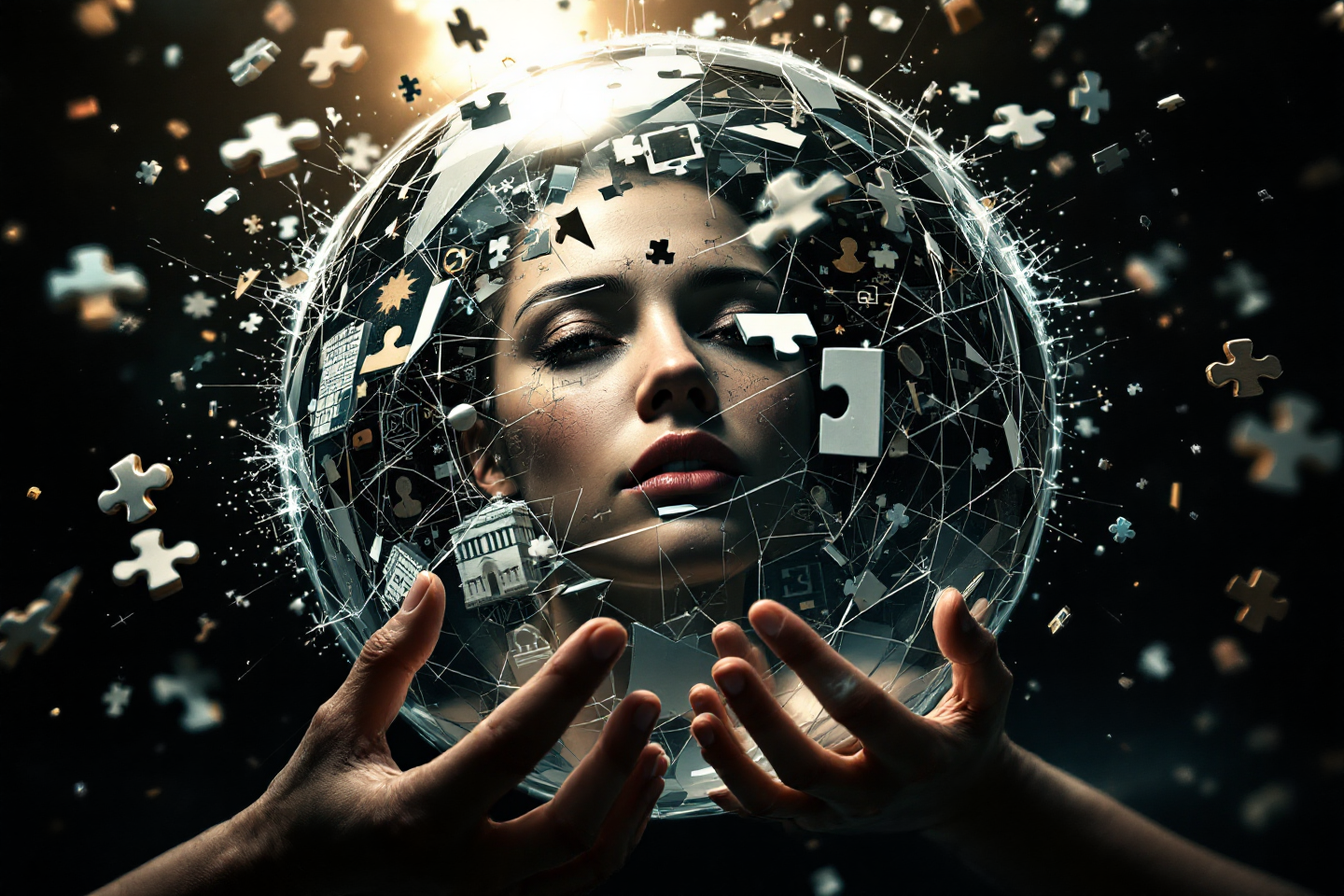What if I told you that much of what you believe to be reality is nothing more than a collective dream? A script handed to you before you even knew you were part of the play? Think about it—your opinions, your beliefs, your understanding of what’s “normal”—are they truly yours, or were they shaped by forces beyond your control? Reality isn’t something we simply stumble upon; it’s built, negotiated, and reinforced by those around us.
We often assume that what we see, hear, and experience is an accurate reflection of the world. But perception is not a clear window—it’s a stained-glass mosaic, pieced together by culture, upbringing, and the invisible hands of society. Two people can witness the same event yet interpret it in entirely different ways. Why? Because perception is filtered through the stories we’ve been told all our lives.
The Social Construction of Reality
Reality is largely a social creation. What we accept as “real” is often just a widely agreed-upon illusion. Laws, morality, money, gender roles, even time itself—these are not absolute truths; they are ideas that have been reinforced over generations until they became invisible rules we follow without question.
How Society Shapes What We See
Reality isn’t just about facts; it’s about interpretation. Take beauty, for example. What is considered attractive in one society may be seen as undesirable in another. The same applies to success, intelligence, and even morality. These aren’t universal truths; they are ideas shaped by the collective beliefs of a culture.
“What is considered normal is merely an agreement society has made with itself.”
From the moment we are born, we are immersed in a world of invisible rules. We learn what to desire, what to fear, and what to aspire to. These lessons are so deeply embedded that we rarely stop to ask: Who decided this? And why?
Even something as fundamental as time is a construct. Why do we have a five-day workweek? Why do we measure age the way we do? The ancient Romans saw time differently than we do. Some indigenous tribes have no word for “future” because their reality isn’t structured around linear time. What we take as natural is often just deeply ingrained habit.
The Hidden Hand of Culture
Culture is the invisible architect of our thoughts. It tells us what is polite, what is offensive, what is acceptable, and what is unthinkable. Every interaction, every gesture, even the way we walk or sit is shaped by cultural codes we rarely acknowledge.
Consider how different cultures approach work-life balance. In some places, working 60-hour weeks is seen as a badge of honor; in others, it’s considered a failure to enjoy life. The same actions, two entirely different interpretations.
“You don’t see the walls of the prison when you’ve lived inside it your whole life.”
The Power of Institutions in Defining Reality
Institutions—governments, religions, schools, corporations—don’t just reflect reality; they manufacture it. They establish rules, define values, and dictate what is acceptable. Think about money. It’s just paper, yet it controls our lives. It has power because we collectively agree that it does. The same goes for laws. A legal system only works because we believe in its authority. Without this shared belief, these structures would collapse.
Language: The Invisible Architect of Thought
Language doesn’t just allow us to communicate—it shapes the way we think. Ever noticed how some languages have words that don’t exist in others? That’s because language isn’t just a tool; it’s a lens. It determines what we can conceptualize, what we can express, and even what we can imagine.
Controlling language is one of the most powerful ways to control reality. Propaganda, media, and even education shape the way people see the world by controlling the words and narratives available to them. Think about history—what gets remembered, and what gets erased? The past is not just facts; it is a carefully curated story.
“Reality is written in words before it is lived in actions.”
Breaking Free: Questioning the Reality Given to You
If reality is constructed, does that mean we are prisoners of illusion? Not necessarily. In fact, understanding how reality is built is the first step to reclaiming your power. The world around you is not fixed—it is fluid. And that means it can change.
History is filled with examples of reality being rewritten. Civil rights movements, revolutions, gender equality—all of these shifts happened because people began questioning the dominant narrative. They refused to accept reality as it was handed to them.
Breaking free doesn’t mean rejecting everything. It means seeing beyond the surface, recognizing which beliefs serve you and which do not. Are you living by a script written for you, or are you the author of your own story?
“The moment you question the world around you is the moment you begin to shape it.”
The Influence of Media and Technology
In the digital age, reality is more constructed than ever before. Algorithms determine what you see, shaping your opinions without you even realizing it. If your news feed only shows content that aligns with your existing beliefs, your reality becomes an echo chamber.
Social media doesn’t just reflect culture—it creates it. Trends, political movements, even personal identities are influenced by the digital landscape. But how much of what you see online is organic, and how much is designed to keep you engaged?
The New Gatekeepers
It’s no longer governments or philosophers shaping reality—it’s tech companies, influencers, and AI. Your feed, your recommended videos, even your search results are sculpting your worldview without you realizing it. The digital age is rewriting reality faster than we can process.
“If you never see an alternative, you’ll believe there isn’t one.”
Reality is Negotiable
Once you understand that reality is not set in stone, you begin to see its cracks—and in those cracks lies possibility. You can choose which beliefs to challenge, which rules to question, and which narratives to rewrite. Reality is not just something we inherit; it is something we create.
So, the next time you take something for granted as “just the way things are,” stop and ask: Who decided this? And more importantly, do I have to accept it?
If reality is built, then so is change. And the power to reshape the world starts with those who dare to question it.
“The world is only as real as the stories we choose to believe.”


